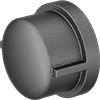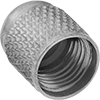Filter by
Color
ID
OD
Plug Connection Method
For Use With
Fitting Connection
Cap Type
Thread Type
Inside Width
Head Width
DFARS Specialty Metals
Maximum Temperature
Thread Size
Building and Machinery Hardware
Fluid Handling
Material Handling
Sealing
Electrical
Containers, Storage, and Furniture
Facility and Grounds Maintenance
Heating, Ventilation, and Air Conditioning
Fabricating and Machining
Lubricating
Fastening and Joining
Safety Equipment
Communication











































































